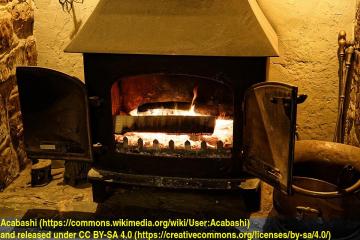
You may have noticed something happened since Push Bikes installed an air quality sensor. The covid pandemic and the lock-down that followed offered a unique opportunity for an experiment. Unfortunately shortly after lock-down the particulates sensor on the Push Bikes node failed, and the combination of the pandemic and other problems meant it was some time before it could be recovered and repaired. Additionally, when the sensor failed it maxed out, making it impossible to see the real data on the automatically generated graphs. That period has now passed, but thankfully all was not lost at that most interesting of times. I was able to track down where the data from the Push Bikes measurement node had been saved, and with some Linux shell scripting it was relatively easy to recover the files from the server and join them together, to be read into a spreadsheet. It was also easy enough to use the same technique to grab the data for the sensor in Bournbrook. From this data the following two graphs were created. The first is for the Push Bikes sensor (which was located on the A4040 in Hazelwell until it failed), and the second is for Bournbrook.

As you can see the particulates level went up after lockdown commenced, exceeding the limits recommend by the World Health Organisation (WHO). The Bournbrook sensor is not far from the A38, but in a residential side street that might be expected to have lower pollution levels. However, you can also see that during the time when both sensors were active, the results were not wildly dissimilar. So why did the particulates level go up so markedly after lockdown, when traffic levels had reduced and better air quality was being reported?  To get the answer required looking further afield. At this time, a node I checked out in the Devon countryside was showing very high levels of particulates, and even further afield the nodes around Dublin were also reporting high levels of pollution. Then the Irish broadcaster RTÉ reported that illegal gorse burning (pictured right) was causing massive air pollution (this was also reported by the Irish Examiner). Since our prevailing weather comes from the west, it is likely this was the cause of the pollution spikes after lockdown.
To get the answer required looking further afield. At this time, a node I checked out in the Devon countryside was showing very high levels of particulates, and even further afield the nodes around Dublin were also reporting high levels of pollution. Then the Irish broadcaster RTÉ reported that illegal gorse burning (pictured right) was causing massive air pollution (this was also reported by the Irish Examiner). Since our prevailing weather comes from the west, it is likely this was the cause of the pollution spikes after lockdown.
Much as many of us would like to blame cars for air pollution, they are far from the only source. Thus the reduction in the level of particulates resulting from lockdown was not as salient as might be presumed. It was measurable, but it required much data smoothing and comparison with previous years. Other sources are more significant contributors to particulates, as the graphic below shows.

 Note that the main contributor to particulates is "Residential and small-scale commercial combustion". But don't most of us heat our homes in the UK with gas? That may well be true, but these residential particulates originate from wood burning stoves. More people are burning wood in stoves than you might think. That is why on days with poor air quality in Birmingham, one can often smell wood smoke. However, this doesn't let motor traffic off the hook, since as you can see it is a significant contributor to NOx (oxides of nitrogen). It was the reduction in NOx that was primarily responsible for the reported improvement in air quality during lockdown.
Note that the main contributor to particulates is "Residential and small-scale commercial combustion". But don't most of us heat our homes in the UK with gas? That may well be true, but these residential particulates originate from wood burning stoves. More people are burning wood in stoves than you might think. That is why on days with poor air quality in Birmingham, one can often smell wood smoke. However, this doesn't let motor traffic off the hook, since as you can see it is a significant contributor to NOx (oxides of nitrogen). It was the reduction in NOx that was primarily responsible for the reported improvement in air quality during lockdown.
The bottom line is, we need to stop routinely burning things, be it fossil fuel in cars, or wood in that lovely cast iron stove in the living room, because far too many people are polluting the air we breath by doing the same.
Credits
With thanks to Sustrans for the reference material on air pollution. The top photo is from The Irish Examiner.
Stove vs Vehicles

BBC Graphic on Wood Burning Stoves



